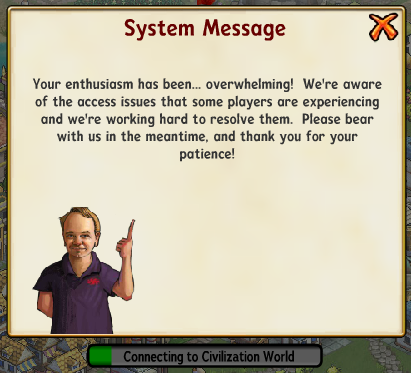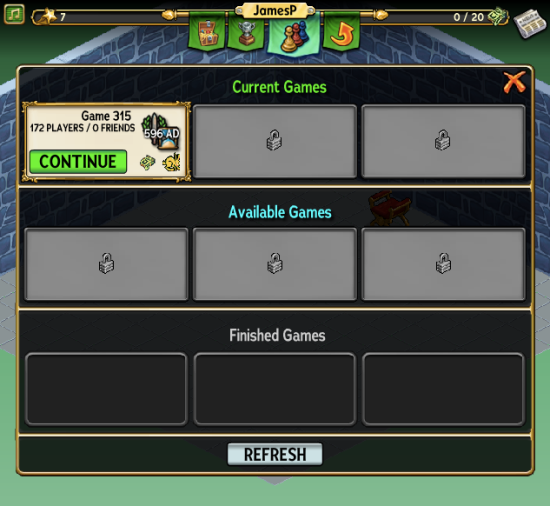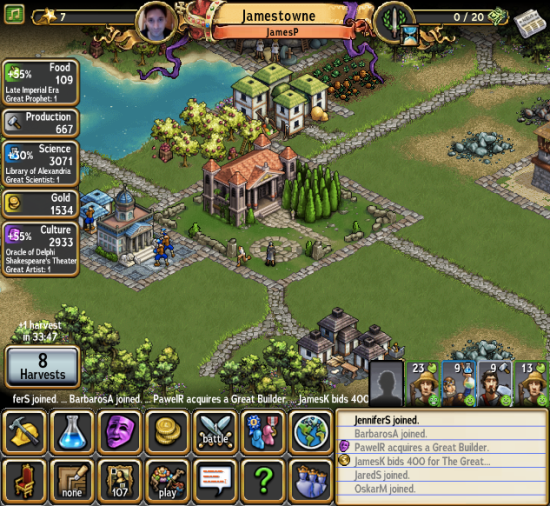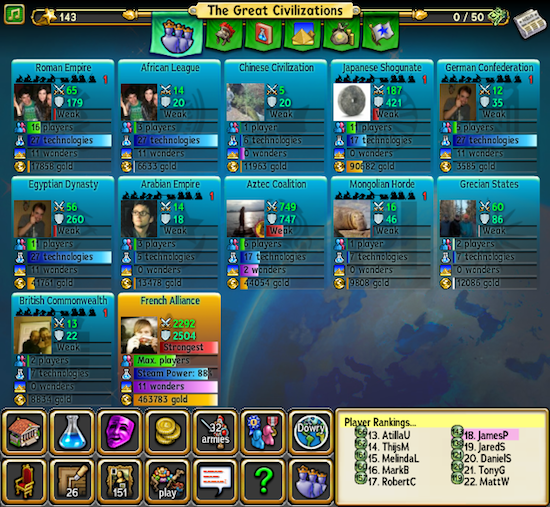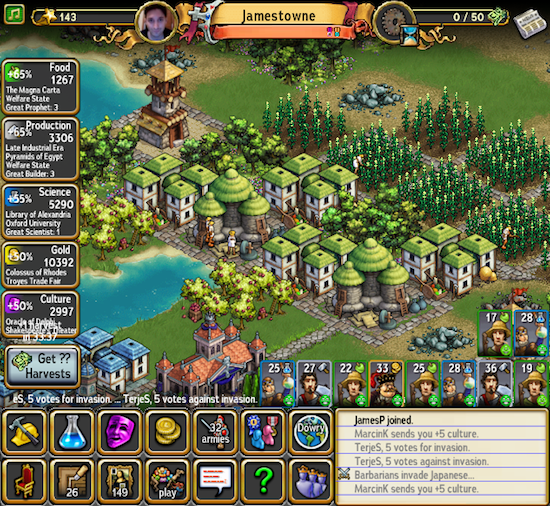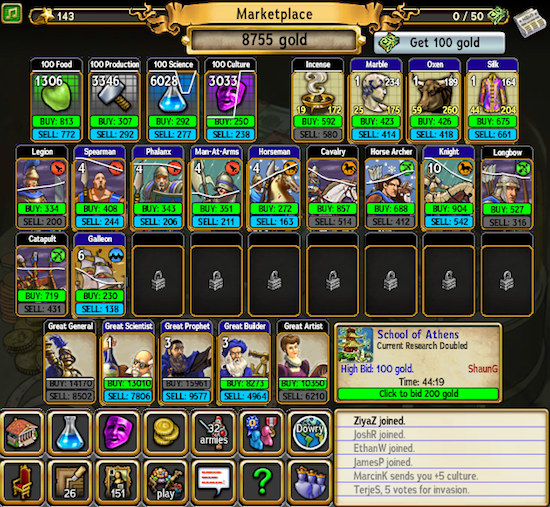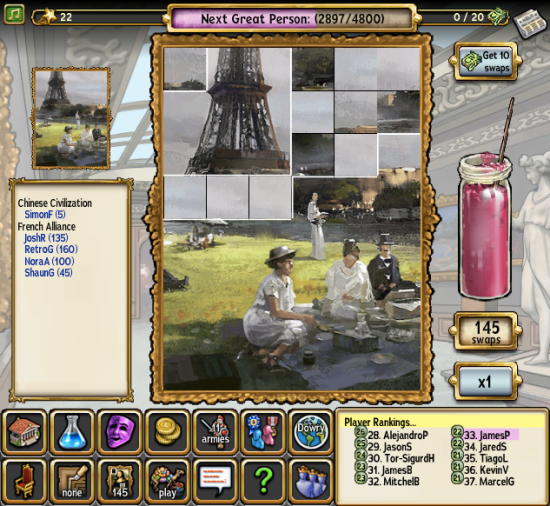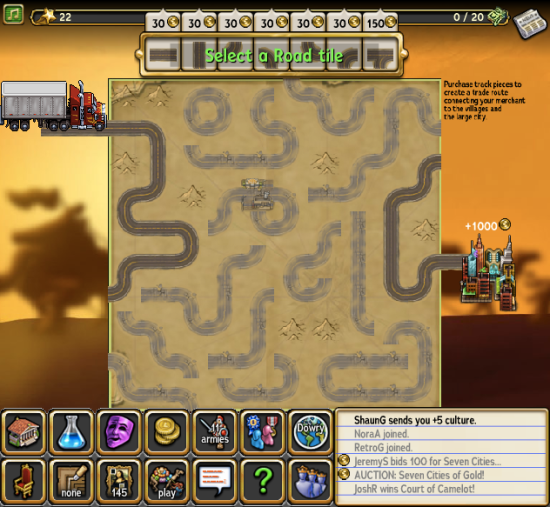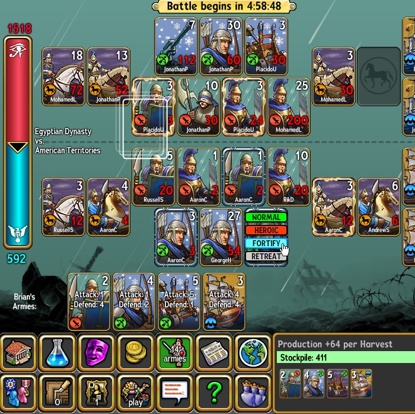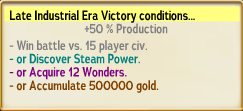Legendary game developer Sid Meier’s newest installment in the venerable Civilization franchise was supposed to be a big deal. It was supposed to be Civilization, but on Facebook — Sid Meier’s gaming genius unleashed upon the unsuspecting FarmVille, social, casual gaming masses. It may not have seemed like it, but some gamers knew Civilization World could’ve turned the tide of gaming, bridging the gap between casual and hardcore gamers, becoming a gateway game to the wonderful world of what hardcore gamers would call “real” gaming — something Nintendo attempted with the Wii, but never quite achieved.
I’ve been loyally playing Civilization since it was released back in 1991. I was born in 1984. I built an entire scenario in Civilization II with the rudimentary map editors. I never succumbed to unhappy citizens in Civilization III, and I played Civilization IV — easily the best installment in the franchise — for more hours than most people play any singular thing. I was ranked in the top 10 on the head-to-head leaderboard for the PlayStation 3 Civilization Revolution, the franchise’s surprisingly successful attempt at building a Civ that actually worked on consoles rather than PCs, for as long as I actively played said installment. I was also disappointed and underwhelmed by the recent Civilization V, like any good Civ fan. I know Civ, and after Civilization Revolution’s successful attempt at translating the game to a faster-paced, slightly more casual crowd, I was looking forward to see what happened with Civ World. Despite my two decades of loyalty, Civ World would not let me into the closed Beta no matter how many times I applied. After the game recently launched its public Beta about a week ago and finally getting my hands on the product, the conspiracist in me thinks he knows why they didn’t let me into the closed Beta: Because I am a Civ fan, made that very clear on my closed Beta applications, and so far, this game is, sadly, not worth my time and the dev team knew how I’d feel. Funny thing is, it doesn’t seem worth the casual Facebook gamer’s time either.
So, if you care about Civilization, Facebook, casual gaming, or the metanarrative of hardcore and casual gaming, read on below, and don’t worry, the post isn’t as long as it seems. There are a bunch of screenshots.
Even though the game has hit an open Beta, you still might not be able to actually access the game. Yes, it is a Beta, which means the very essence of the release is purely for the dev team to knock out all the issues, but you know what usually doesn’t happen in an open Beta? Being prevented from actually playing the game. Sure, a Beta sometimes has a few connection issues here and there, but by and large, the Beta release is to knock out the “leftover” issues, rather than one so big as literally not being able to play. But, for the sake of Beta, we’ll let the connectivity issues slide, and hey, the team is fully aware of the current connectivity issues, and they even apologize with an adorable cartoon Sid Meier, which, with me lumping Meier into the small group of “GAMING GENIUSES,” (you too, Tim Schafer, Fumito Ueda, and everyone at Harmonix) all caps, well, it melts my cold, jaded gamer heart.
Once (if?) you do successfully connect, you’ll be immediately pounded by frequent game-halting latency issues, in what is a not graphically intensive Facebook game. Just breathe, me. Look at how adorable cartoon Sid is. Calm down. The game allows you to play multiple matches, and upon login, you’ll be greeted by a screen which lets you join new games, as well as hop between your in-progress games.
So far, most of the time this screen fails to load, and thus doesn’t show my current games and available games to join. Again, the conspiracist in me thinks the dev team really doesn’t want me to play. But I am clever, and figured out that even if the login screen doesn’t allow me to join my matches, I can click the red arrow icon toward the top of the screen, which takes me to my city, successfully bypassing the never-loading login screen and granting me access to the game. I’m not sure what would happen if I had multiple in-progress games and clicked on that button, because a second available game didn’t open up for me until last night (the only other time the login screen actually loaded aside from the above screenshot over the course of the past week). I’m sure there was some milestone I hit which unlocked the second available game, but I’ve no idea what it was. I received a message saying it was now available and that was that. If you manage to cleverly work around the failed login (or have it load properly, I guess) and get into your city view, then manage to withstand the amount of time it actually takes for your city and HUD to fully load, you are now looking at Civilization’s take on FarmVille.
Do not worry, I didn’t actually name my town Jamestowne. What is probably the best aspect of Civ World, is that it seems to take the first name of your Facebook profile and throws a town-based suffix on the end. Jamestowne, Evanboro. Charming.
To Civ World’s credit, it’s actually not a FarmVille clone, regardless of how many corn fields get built, and is much more complicated than the difficulty level hardcore gamers tend to feel Facebook games have. All of your basic Civilization gameplay is present — researching technology that opens up new buildings to improve your city and new military units to build a stronger army, while generating the usual suspects of Civ resources: Food for population growth, hammers for building and unit production, science to research new technology, gold to buy stuff from the market (something new to Civ that we’ll get to below), and culture, which this time around doesn’t increase city borders, but generates Great People and helps build Wonders (for those new to the series: civilization improvements that are difficult to build and have an extremely beneficial civ-wide bonus).
Like most iterations of Civ, population growth is the key to early game success. Population grants your civilization more workers and citizens, which in turn generates more of everything. Unlike every other iteration of Civ, however, there is practically nothing to do in the early going, and you can’t really do much until you have a larger population, which happens to take roughly forever. Normally in Civ, while you are waiting for your first city to grow in population or waiting for some buildings to build, you spend time actively exploring the world by moving units around the terrain. There is no exploration in Civ World, not really. The “exploration” consists of building guard towers at the edges of the unexplored territory (covered in the usual black fog of war), which when built, uncovers some of it, and so far, there is nothing much to find other than a few terrain choices and a few resources to harvest, like stone, iron, and wood. Your population grows very slowly in early game, even if you are a master strategist, simply because there is nothing to help your workers harvest food. Eventually, you’ll have multiple workers harvesting food so your population grows a bit faster, but only a bit. However, because harvesting food is so important, you still won’t be doing much when you get a rise in population other than assigning your new citizen to harvest food along with the other ones.
The first few real-life days of Civ World are terribly boring.
Before moving on: This is a terrible design choice. Browser-based civilization-building games are known to eventually move slowly. The ones that do it right, however, start off by giving players something to do for the first few hours (players generally place buildings which only take a few minutes to build, at which point they can build another one), which makes sense: You keep a person playing by showing them how fun the game is. In what is perhaps the most counterintuitive strategy I have ever seen in a game, Civ World starts the player off by giving them nothing to do for a few days. The game didn’t have to be like this. Browser-based civilization-building games have to move slowly by design, yes, but Civ World should’ve just flipped it around like every other browser-based civilization-builder: There is no reason why the game couldn’t start fast, then become slower later on.
After a somewhat obnoxious and intrusive tutorial that will only bother veteran Civ players, but kind of hilariously doesn’t provide enough documentation for the exact type of player the Civ World team clearly felt would benefit from the relentless tutorial, and after you wait around for a few days doing nothing but watching your population slowly grow, then using your new population to build workers to help your population grow so you can build more workers to help your population grow (ugh), you’ll eventually have enough population to where you can build workers that do other things.
However, before you start doing things, you should immediately join a civilization when the tutorial tells you to, or soon after. It doesn’t matter that you don’t really know what that does yet — simply click on the world icon when it becomes available, determine which is the strongest civilization (there are bars and words that will literally tell you what is the best civilization), then attempt to join it. If it is full (likely), join the second strongest and continually check to see if a better option ever becomes available. Probably the neatest aspect of Civ World is how civilizations work this iteration out. Instead of running an entire civilization like in previous games, you are one city within an entire civilization, for example, the Romans. There are a decent amount of social options for each civilization, but what it really boils down to is voting for different government policies, fighting battles against other civilizations, and being a part of the shared, civilization-wide technology (everyone’s science is pooled toward a technology) and wonders (people sacrifice Great People to build a wonder for their civilization) pool. There are ranks within each civilization, as well as advisory positions, both of which, if obtained, simply give your city things like production bonuses.
Honestly, I’ve found you don’t really have to pay attention to the social aspect so far. I’ve held various advisory positions, helped built various wonders, and rose to the highest (King) and second highest (Prince) rank multiple times, without even trying. This isn’t bragging. Most of this happened while I wasn’t even logged into the game, and I received messages about the events when I logged in a day later. A bunch of worthwhile ideas, seemingly executed in such a way where they ended up a little too in the casual gaming arena.
Now that you are done focusing exclusively on population growth, you’ll think you can start playing the game. Not really, now you have to focus exclusively on building workers to produce hammers. Science, culture, and gold barely matter before you have a bevy of food and hammers, but with hammers comes improvement buildings that help your workers generate resources more efficiently, and then, finally, you can start playing Civ World. Almost a week later. Sure, you can build things other than food and hammer workers throughout that week, but you’d be extremely inefficient in doing so, and oddly enough, you’d actually limit the game’s eventual playability. So, if you want to have the most fun available in Civ World, you pretty much have to suffer for a week.
Luckily, you are allowed to pick up and move your workers’ houses, as well as change your worker jobs on the fly without any cost whatsoever, so at least you can correct your mistakes and try out different placement combinations to see how happy you can make your workers — the happier, the more resources they’ll collect. You can also “recycle” most buildings, but upgraded buildings (which simply provide a better resource gathering bonus to your workers), will only recycle for a fraction of the production cost. They also added a “harvest” option, which seems to generate one new harvest per hour, which when clicked, automatically generates the amount of resources each worker gathers in “one harvest,” which is simply the little number above their portraits. Harvests are supposed to make the game move more quickly, and technically it does, but it isn’t particularly noticeable until much later in the game.
After finally building enough population, hammers, and eventually the other resources, you can mercifully click on all the little buttons in the HUD without fear of severely hampering your city’s early game growth. You can play with the market, which seems to be the only thing gold is used for, and do the MMO-style auction house babysitting — constantly watching the changing market and buying resources, military units, and Great People low and selling high. The market seems to change frequently, so if one literally doesn’t do anything else throughout their day other than watch the market, one can probably become rich rather quickly (in terms of Civ World speed, at least) and in turn, buy resources to grow their city faster.
There are also CivBucks, the game’s cash shop currency. Fairly standard: Players can purchase little bonuses, such as more harvests to help their game move a little bit faster.
Other than that, there are a few minigames for the science, culture, and gold resources, when if completed, returns some of the related resource. The minigames seem to be a decent source of resources in the early game, then seem to be a waste of time later on. Free resources are free resources, but considering the minigames aren’t particularly fun and your city will eventually generate many more resources than the minigames provide, you probably won’t want to waste time doing something that isn’t fun.
The culture minigame is a simple tile swap, that thankfully is more of a click-and-match. Multiple people play it at once, so you want to be crafty and try to nail the completing swap for a nice finishing bonus:
This is the gold minigame. Connect roads through the different villages and connect them to the final destination to score the available gold prize. Each road costs money that detracts from the final prize, so you want to be efficient. The max prize, which so far seems to be 1,000 gold, stops mattering pretty quickly, as your city will generate much larger amounts of gold throughout the day.
As for the battles, aside from the initial week of doing nothing, they’re probably the worst-implemented feature in the game, albeit simple. A civilization decides to attack another one based on a civ-wide vote, and everyone fills up available military unit slots in the battle menu, then way too many hours pass (for the battles in which I’ve participated, they’ve both had a timer of 9 or 10 hours until the battle starts) and the battle is decided based on the strength of the competing armies. Pretty simple, but also pretty boring. Not a screenshot from my civilization’s battle history, since individuals don’t exactly control when a battle can start and I couldn’t force one to take a screenshot of it.
For the Civ veterans or those new to the series wondering if the game is winnable, unlike most civilization-building browser games: Yes, the game is winnable. A match will move through various eras of time — like any Civ game — and each civilization will obtain points when they “beat” an era by achieving one of that era’s goals. The goals aren’t really achievable without teaming up with the rest of your civilization, but I suppose a power player who figured out the best possible strategies in the game (and possibly spends a lot of CivBucks) could conceivably achieve a goal all on his or her own.
It seems like once the game ends, the points gathered from era victories add up and then a winner is determined. The only other kind of victory aspect seems to be the player ranking, which is determined by fame points (the little star and number in the top left corner of most of the screenshots). Fame is simply a ranking number, and is accrued by completing various tasks: Gaining achievements or medals (basically achievements that are more difficult to obtain), winning battles, etc. The more fame a player has, the higher they are ranked within their own civilization. Players may also obtain gems which are a form of currency to spruce up their throne room — strictly an aesthetic activity, but carries over from match to match. Veteran Civ players will remember similar mechanics from older iterations of the franchise.
VERDICT
So, that’s Civilization World, for the most part. Yes, there was a lot of explanation and I didn’t cover everything — it’s Civilization, after all. But if I can say “It’s Civilization, after all,” why doesn’t it seem very good? Well, because it isn’t. Not yet, at least. It has all of the tools to be a decent entry in the venerable Civ franchise, but lacks the execution. I actually want to play, but every time I log in, I remember the game doesn’t really want me to and I immediately run out of stuff to do. Even if I join some new available games and play multiple games at once, that’s just me monitoring multiple games in which there is nothing do. If the actual technical issues are ironed out before release — and one can only assume they will be — the game still moves too slowly, there’s still barely anything to do. Browser-based civilization-building games tend to do that, but as explained somewhere far, far above, not like this. No game should take the better part of a week before you can actually do anything in it, and then when you can actually do anything, there isn’t much to do anyway.
Ultimately, in this current version — which again, is still a Beta — Civ World is too simple and too slow (ironically enough) for the veteran Civ player, yet too complicated (and probably too slow) for the casual Facebook gamer. Rather than bridging the gap between hardcore gamers and casual gamers, it’s this Civ veteran’s opinion that Civ World fell into that gap rather than built a bridge across it. Maybe it should’ve pooled all its science into engineering.



